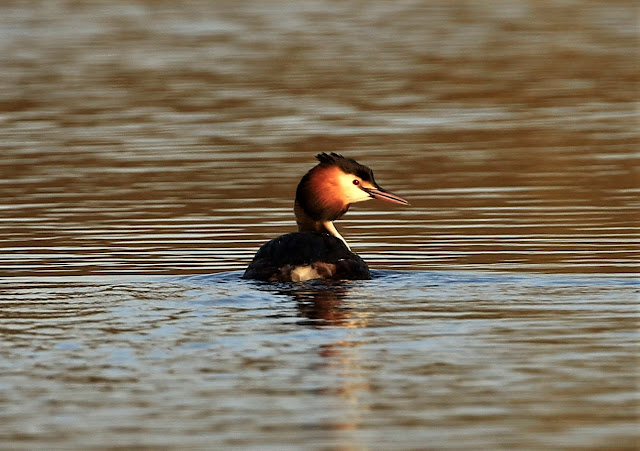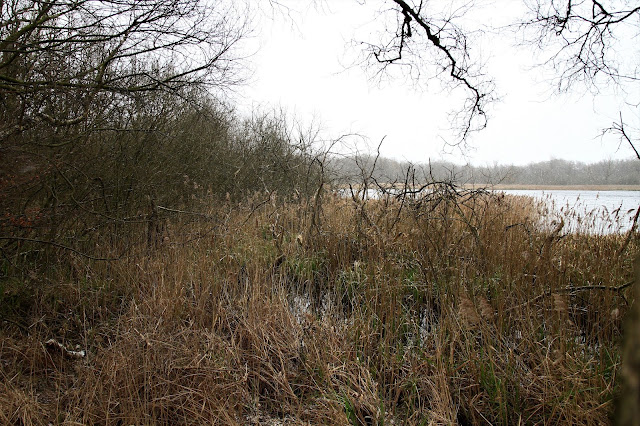Chiffchaffs have been thin on the ground so far, undoubtedly due to the cold weather we have been having. I have seen a couple of singles on the patch so far (both silent), however, today on the patch, 2 birds were present, one of which was a singing bird.
Also on the patch today I located one of my target species for the day, Snipe (pair) on traditional breeding habitat. The weather this morning was glorious and it was sheer delight to watch the male Snipe performing his wonderful display-flight, which includes the wonderful 'drumming' behaviour. Following a period of aerial display the Snipe plummeted almost vertically to the ground whilst giving its "chip-per chip-per chip-per chip-per" song. This song was heard occasionally whilst the bird was on the ground.
Nineteenth century naturalists initially thought that the wonderful vibrating, drumming display produced by the male Snipe was a vocalisation, however, this sound is produced by the outer tail-feathers held at an angle from the tail, the wind rushing over the feather produces the vibrating action which in turn producing the 'drumming', which has been likened to distant sheep bleating.
It is a great privilege to have Snipe engaged in breeding behaviour on the patch, this is indeed a rare occurrence these days.
The weather continued to very pleasant this afternoon with a high of 13 degrees Celsius. I therefore decided to check a number of fields for signs of Wheatear, however, this was a fruitless search.
Also on the patch today I located one of my target species for the day, Snipe (pair) on traditional breeding habitat. The weather this morning was glorious and it was sheer delight to watch the male Snipe performing his wonderful display-flight, which includes the wonderful 'drumming' behaviour. Following a period of aerial display the Snipe plummeted almost vertically to the ground whilst giving its "chip-per chip-per chip-per chip-per" song. This song was heard occasionally whilst the bird was on the ground.
Nineteenth century naturalists initially thought that the wonderful vibrating, drumming display produced by the male Snipe was a vocalisation, however, this sound is produced by the outer tail-feathers held at an angle from the tail, the wind rushing over the feather produces the vibrating action which in turn producing the 'drumming', which has been likened to distant sheep bleating.
It is a great privilege to have Snipe engaged in breeding behaviour on the patch, this is indeed a rare occurrence these days.
The weather continued to very pleasant this afternoon with a high of 13 degrees Celsius. I therefore decided to check a number of fields for signs of Wheatear, however, this was a fruitless search.

















